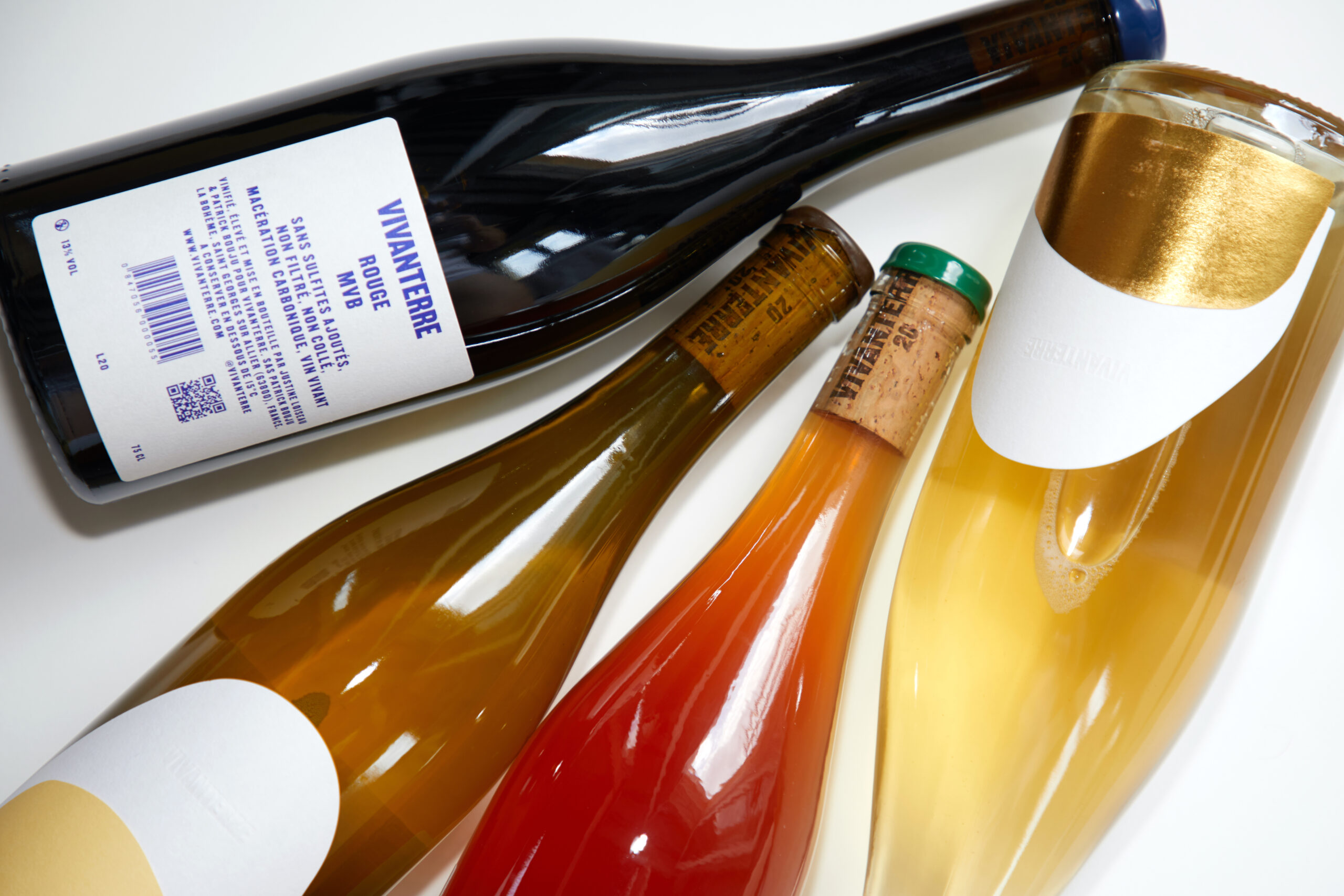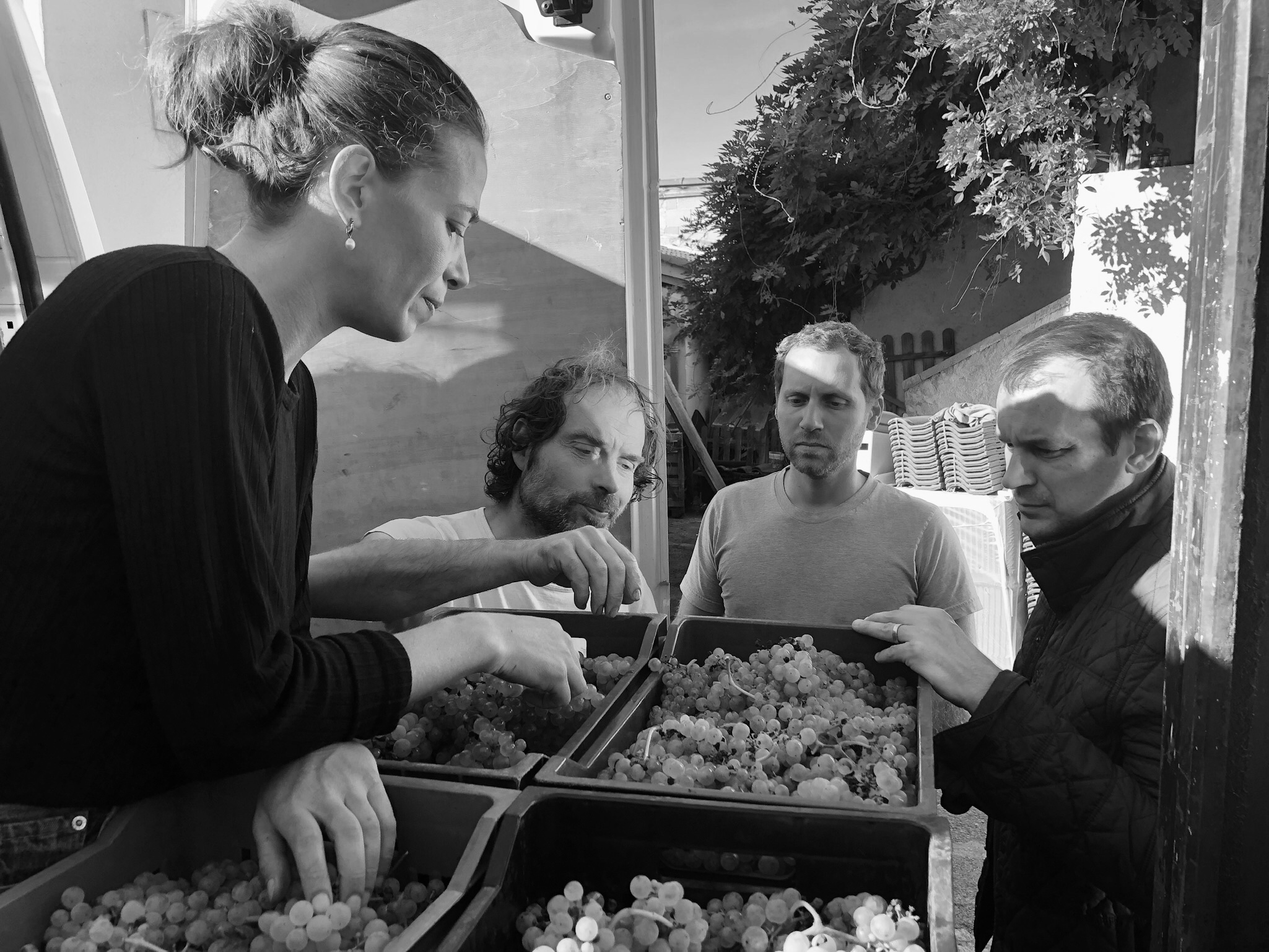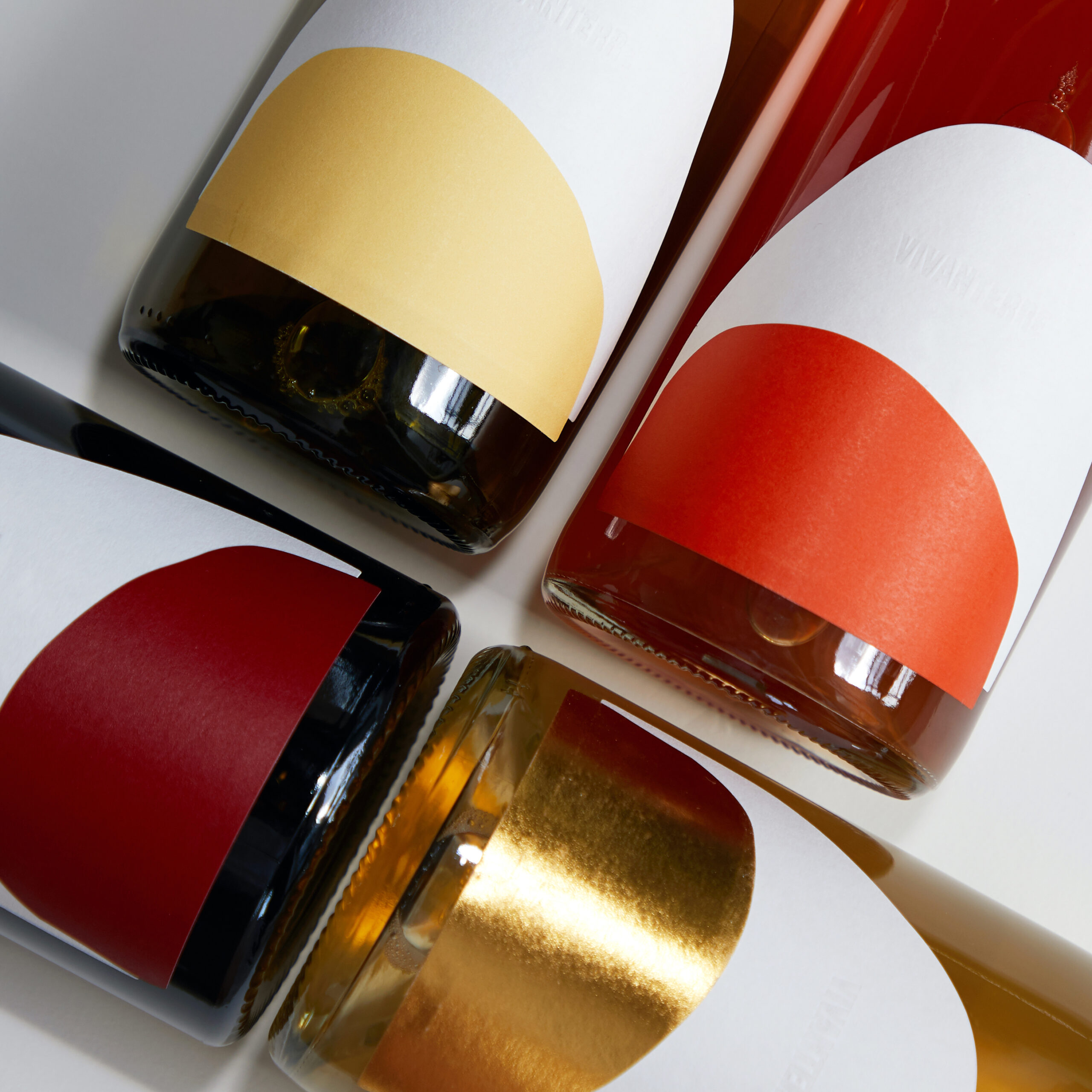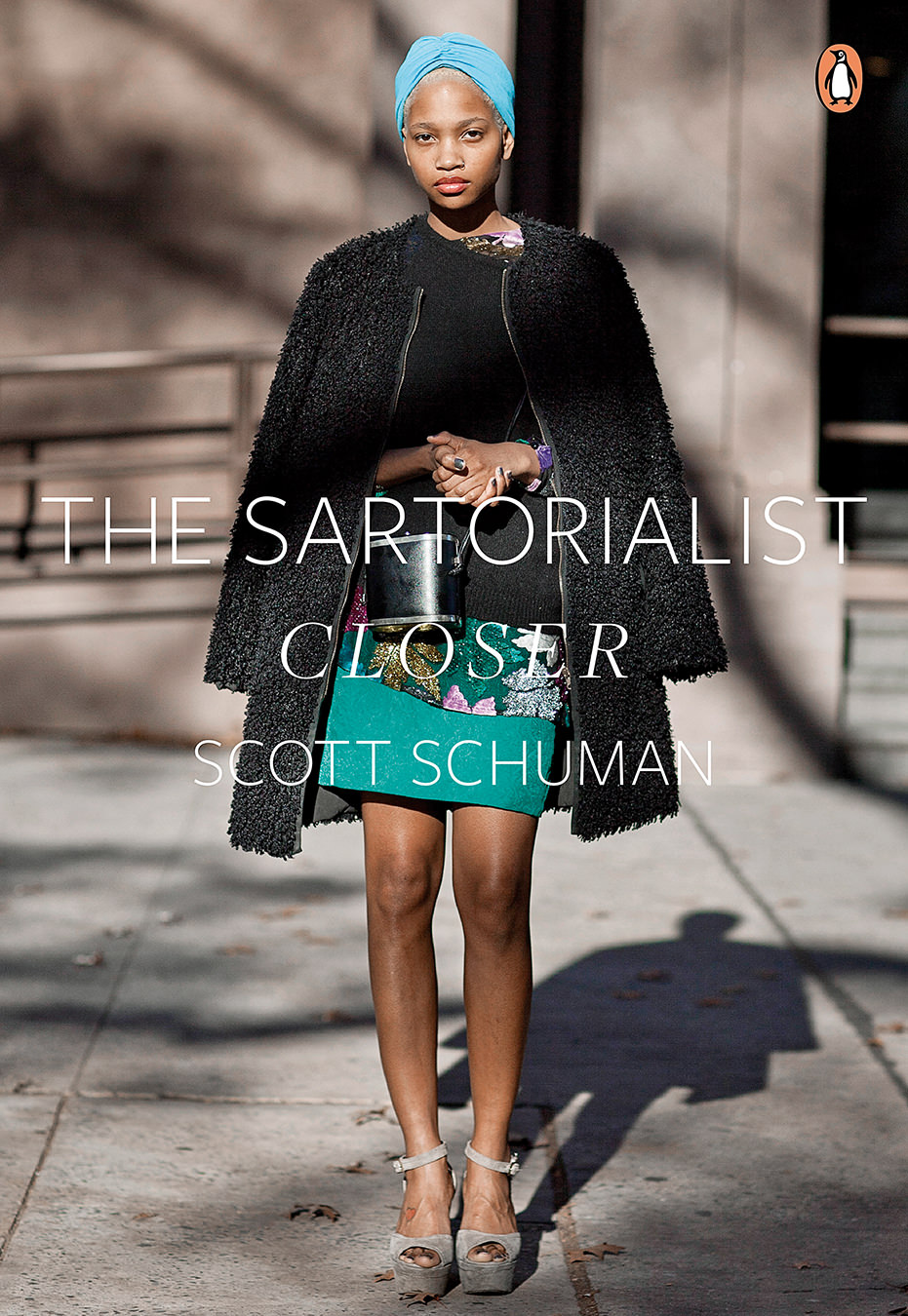The Most Fashionable Wine Brand in the World
Natural wine brand Vivanterre merges fashion and wine.

For Rosie Assoulin, the New York–based fashion designer and co-founder of natural wine brand Vivanterre alongside her husband, Max Assoulin, wine and fashion go hand in hand. “Our wines are elegant, sophisticated, authentic, and also very refined for a natural wine—all things that we really try to work towards bringing to our fashion collection,” she says. “There is also a flirty and fun quality to it—wine is very celebratory. It’s about bringing people together, experiencing and sharing things. Our collections always have interesting qualities or hidden pockets or keyholes or details too, much like the wine. It’s about the celebratory spirit while pushing things forward.”
And Assoulin knows a thing or two about fashion. Since founding her eponymous label in 2013, where Max is the CEO, she has received acclaim for her designs that blur the line between whimsy and function. She won a Swarovski Collective Award in 2016, she’s dressed celebrities such as Beyoncé and Elizabeth Olsen, and her designs have been regularly featured in publications like Vogue since the beginning. What then led the Assoulins to start a natural wine brand?

After discovering natural wine over eight years ago, the Assoulins developed Vivanterre, a portmanteau of the French words for “living earth,” out of their respect for, as Rosie describes it, the “slow and considered craft” of winemaking. They saw similarities between natural winemaking and their clothing design practice. “The current zeitgeist of food, spirits, cosmetics and beauty products—things we are putting in, and on, our bodies—people want to be elemental in what they are utilizing and consuming. It’s old yet new and fresh,” Max says.
During their journey, the pair became “obsessed” with the wines of Patrick Bouju and Justine Loiseau, who they ended up spending a weekend with at their home in Auvergne, France, where they broached the idea of a collaboration. In many ways it was a perfect match: Bouju and Loiseau’s efforts prior to joining Vivanterre were similarly fashionable as the Assoulins’. Wines made under their own label, Domaine La Bohème, captivated trendy drinkers the world over, which led to a collaboration with the chef-turned-rapper Action Bronson on red and white wines called À La Natural.
While Bronson was a particular fan of Bouju and Loiseau, natural wine in its entirety has become massively fashionable over recent years. Adored by the likes of Dua Lipa and comedian Eric Wareheim, it has become a liquid marker of cultural relevancy. In the same way that a signature look can define a celebrity’s persona, drinking or fawning over natural wine speaks to a person’s values. Those who drink them are environmentally conscious, minimalist, fun, and most of all, arbiters of both actual and aesthetic taste.
It was aesthetics that first drew Gabriella Bergsten, owner of Garneau Block—Vivanterre’s importer in Alberta, Saskatchewan, and the Yukon—to the brand. “I distinctly remember one of the first promo photos I saw of the orange and gamay on a sunlit table, sun shining through the bottle of the orange wine and all I could think was ‘I need to drink that wine,’” she says. “When I found out who was involved, complete legends in both the wine and fashion world, I knew I had to ask them if we could work together because the wines would be magical.”

For the 2021 vintage, Vivanterre made five such magical wines with grapes sourced from across France. Bergsten’s favourite wine, the Contact SGU, is made with auxerrois, pinot blanc, and gewürztraminer from Alsace and ugni blanc and grenache gris from the south of France. The Gamay MVB uses grapes sourced from the Moulin-à-Vent and Brouilly crus in Beaujolais, gamay’s heartland. Two pétillants naturels—a red and a white—use gamay and chardonnay from Beaujolais, the former supplemented by syrah from Roussillon, and the latter by pinot blanc and pinot gris from Alsace. A fifth wine, the White ARS, is a blend of 60 per cent riesling and 40 per cent sylvaner sourced from the same vineyard in Alsace. Vivanterre says their growers follow organic and biodynamic farming practices, but not all the vineyards they source grapes from are certified as such, and no fining, filtering, or sulphites were used in the production of all five wines.
The wines, like well-made clothing, say something about those who drink them. The orange wine tastes like apricots and sorbet, a fantastic introduction to the world of skin-contact wine for budding enthusiasts. The gamay is more serious, leading with a slightly reductive nose, an inviting option for conventional wine drinkers. And the two pet-nats are rustic but fun, delicious combinations of potent earthy and fruity qualities. The common thread that runs through all of them is a feeling of conviviality: Vivanterre’s wines are meant for everyone. “In what we do in wine and fashion, it’s very celebratory—sharing with other people, bringing people together—that’s what wines have done for thousands of years,” Max says. “It gives people an opportunity to celebrate, and it’s what people use to mark occasions and milestones in their lives, big or small, so because of that, it’s both ubiquitous and special. What we do is try to elevate the everyday with these wines.”




